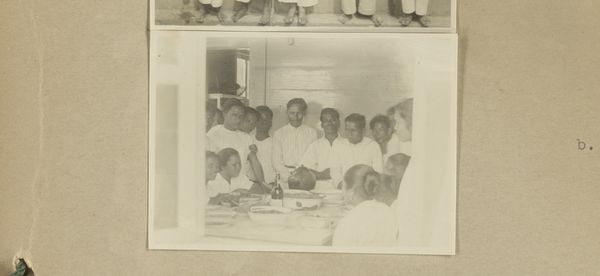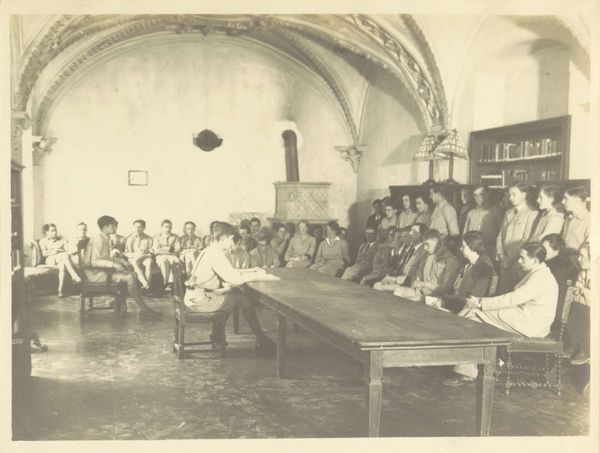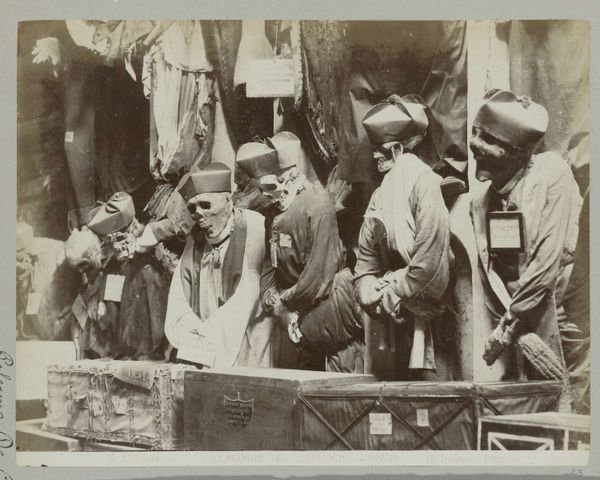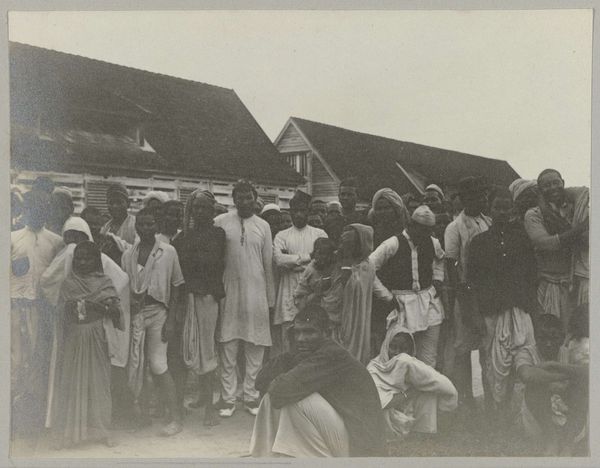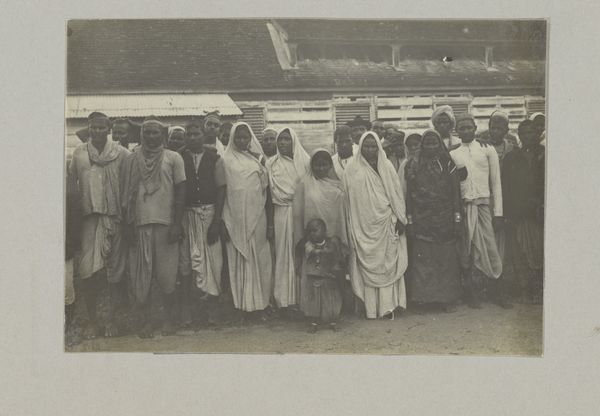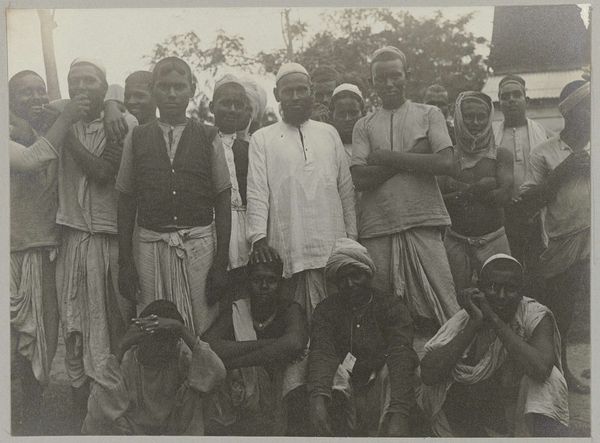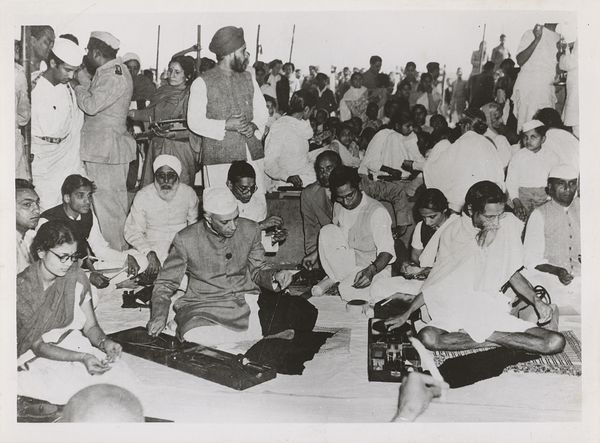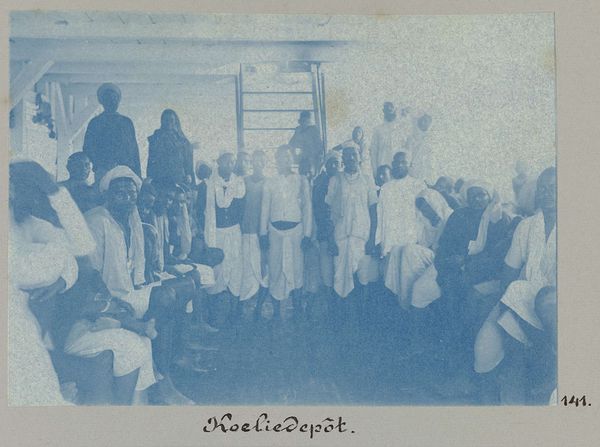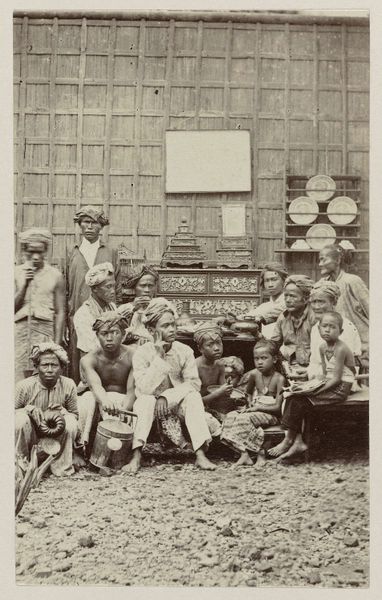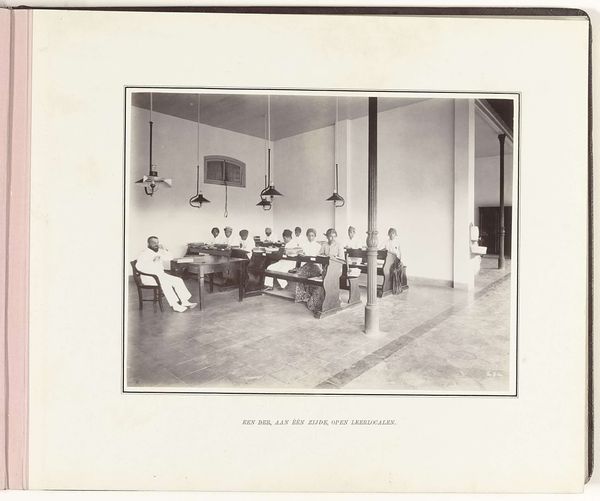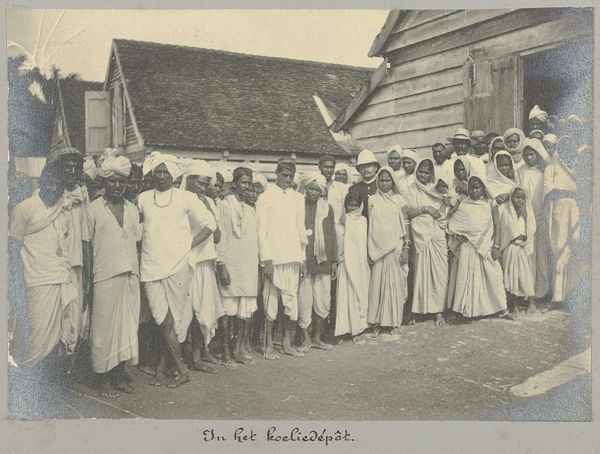
photography, gelatin-silver-print
#
portrait
#
african-art
#
photography
#
historical photography
#
group-portraits
#
orientalism
#
gelatin-silver-print
Dimensions: height 84 mm, width 111 mm
Copyright: Rijks Museum: Open Domain
Curator: Hendrik Doijer captured this photograph, a gelatin-silver print titled "Hindostaanse contractarbeiders in het immigrantendepot," sometime between 1903 and 1910. It presents a striking scene. Editor: Indeed. The immediate impression is one of quiet tension, perhaps, or weary resignation. A large group of people occupies what appears to be a waiting area, all framed by simple, stark architecture. There's a pronounced contrast between those standing and those seated, especially in the play of light and shadow. Curator: Looking at the arrangement, you immediately see the stark socio-political narrative: indentured laborers. They have just arrived, probably from India, at this depot to start working the land, for the Dutch colonizers, most likely in Suriname. Their processing is visible by the ledgers in the center, near what looks to be administrative types observing the whole scene. Editor: Absolutely. The material conditions of these individuals are rendered so bare. They seem divested of agency. Doijer’s photographic process, this gelatin silver print, feels complicit in that divestment, used almost as a tool of documentation of their fate. And look at the architecture itself – so plain, all exposed wood. This is built for the purposes of a very precise control. Curator: And this photography then operates to codify colonial administration. The composition, in its own right, becomes part of that, framing bodies for control, for surveillance. The subjects appear to be reduced to statistics in a broader imperial machine, destined for plantation labor. Note, the difference between how colonizers are captured versus the clear intention and the power relationship established, between subject and author here. Editor: Yes, even the varying garments, their materials and textures, suggest different stages in a process – clothing perhaps issued by the depot versus what they brought with them. It is a record, documenting how labor is received into the colonial system. Curator: A sobering reminder of a past shaped by exploitation, captured by what became historical portraiture. Editor: Leaving you to ponder on how photography plays into such stories. The contrast within the material versus that what these people are soon going to go through weighs heavily.
Comments
No comments
Be the first to comment and join the conversation on the ultimate creative platform.

